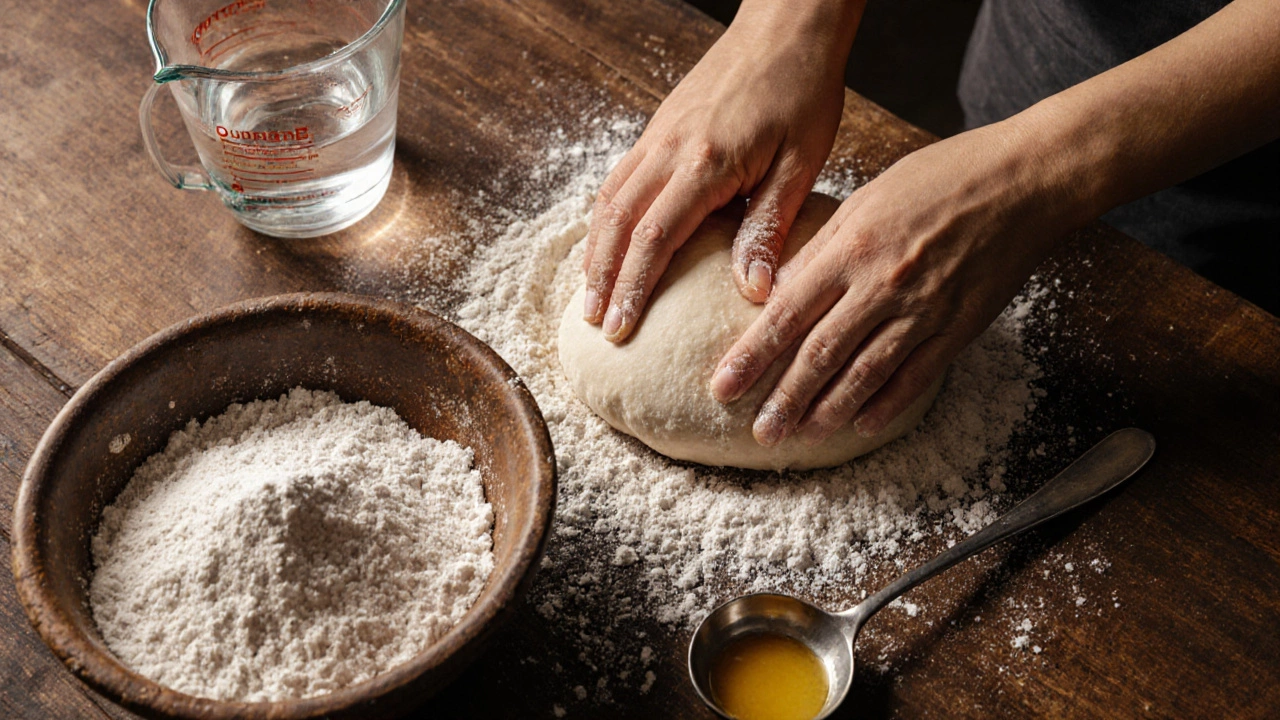Roti Cooking Tricks for Fluffy, Healthy Flatbread
When working with roti cooking tricks, practical methods that turn basic dough into soft, puffed Indian flatbread. Also known as flatbread tips, they help you master the art of roti without a fancy kitchen. Roti cooking tricks encompass the right dough rest time, the perfect heat on the tawa, and quick ways to keep the roti soft after cooking.
One of the biggest companions to roti is naan, a richer, leavened flatbread baked in a tandoor. While roti relies on an unleavened dough of whole wheat flour, naan uses refined flour and yogurt for a fluffy crumb. Understanding the difference lets you pick the right technique for each, ensuring you get a light roti or a buttery naan exactly when the recipe calls for it.
Key Ingredients and Tools That Shape Your Roti
The backbone of a good roti is whole wheat flour, also called atta. Its high fiber content creates a sturdy yet tender crumb, and the gluten develops as you knead, giving the roti its signature give‑back after the first bite. Pairing the flour with a hot tawa (a flat griddle) is the second essential. The tawa must be pre‑heated enough to cause the dough to puff without burning, which is why many cooks sprinkle a few drops of water on the surface to test the heat.
Think of these elements as a simple system: whole wheat flour influences roti texture, the tawa provides the cooking surface, and the technique bridges the two. When you combine a well‑rested dough with a correctly heated tawa, the roti puffs naturally, creating those airy pockets that make it perfect for scooping curries.
Beyond the basics, a few extra tweaks can boost your roti game. Adding a pinch of salt enhances flavor, while a splash of oil or ghee in the dough makes the roti softer and easier to roll. Some cooks also incorporate a teaspoon of warm water with a dash of sugar to aid fermentation, especially in cooler kitchens. These small adjustments align with the trick of letting the dough rest for at least 15‑20 minutes—rest lets the gluten relax and the moisture spread evenly.
Health‑conscious readers will appreciate that roti made with whole wheat flour delivers more fiber, vitamins, and minerals compared to white‑flour breads. The low‑fat profile means you can enjoy roti with hearty gravies without adding extra calories. Pairing roti with protein‑rich dal or vegetable curries creates a balanced meal that keeps you full longer.
Now that you know the core tricks—proper dough rest, hot tawa, whole wheat flour, and subtle ingredient tweaks—nothing stops you from experimenting. Try adding a pinch of ajwain (carom seeds) for a digestive boost, or mix in a bit of millet flour for a nutty twist. Each variation still follows the same fundamental principles, proving that mastering roti cooking tricks opens the door to endless flatbread creativity.
Below you’ll find a curated list of articles that dive deeper into each of these ideas, from detailed dough‑kneading guides to comparisons between roti and naan, and health tips for making the most of your flatbread. Browse the collection to pick up actionable insights, step‑by‑step recipes, and quick fixes for common roti pitfalls.
How to Keep Roti From Getting Soggy - Proven Tips & Tricks
Learn step‑by‑step how to keep roti crisp-choose the right flour, master tawa cooking, store properly, and reheat without sogginess.
